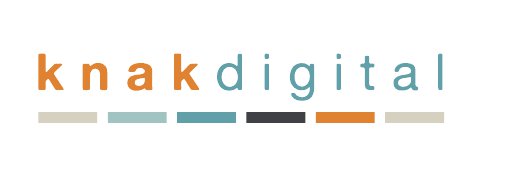One of the most challenging aspects of crafting a powerful resume is translating your day-to-day tasks into quantifiable metrics demonstrating your impact. I see it time and time again; the experience section of employment history that looks like the writer copied and pasted their own job description. Let’s face it, a list of responsibilities only tells half the story and isn’t unique to why the business hired you for the task. Hiring managers and Recruiters want to see the results you’ve achieved, not just what you did. What was your strategy and problem-solving process to get from point A to B to C? Sure, you were hired to execute the role’s responsibilities but did you succeed, or better yet, excel at it?
But how do you quantify your accomplishments, especially if you don’t have direct access to all the data? I’ve listed a few prompts for a range of job titles that may give you ideas of how to strengthen your potential to prospective employers.
Business Development Representatives (BDRs):
- Average Deal Size: What was the average value of the deals you closed?
- Meetings Booked: How many meetings did you successfully schedule and attend?
- Qualified Lead to Opportunity: What percentage of your qualified leads converted into sales opportunities?
- Value of Opportunities Generated: What was the total monetary value of the sales opportunities you created?
Digital Marketers:
- Conversion Rates: Track the success of your campaigns by analyzing conversion rates for newsletters, paid media, or any call-to-action (CTA).
- Website Traffic: Analyze unique visitors, page views, bounce rates, and organic traffic to measure website performance.
- Email Open Rates: Gauge the effectiveness of your email marketing by tracking open rates and click-throughs.
- Social Media Engagement: Measure likes, shares, comments, followers, and other relevant metrics to showcase your impact.
- Cost per Acquisition (CPA) and Cost per Click (CPC): Demonstrate your efficiency and effectiveness in acquiring new customers or leads.
- Return on Investment (ROI): Highlight the overall financial impact of your marketing efforts.
User Experience (UX) Professionals:
- Usability Testing: Share the success rates, user error rates, and task completion times from usability tests you conducted.
- User Engagement/Bounce Rates: Analyze how users interact with your designs and identify areas for improvement.
- Task Success Rate: Measure how effectively users can complete tasks or achieve their goals using your designs.
- User Surveys: Gather feedback and analyze scores/ratings to quantify user satisfaction.
Product Managers:
- Time to Market: Show how quickly you brought products to launch, highlighting your efficiency and ability to meet deadlines.
- User Engagement: Track feature adoption rates and active user numbers to demonstrate the success of your product.
- Revenue Growth: If applicable, quantify the revenue generated by your products or features.
- Project Success: Communicate whether projects were delivered on time and within budget.
Software Engineers:
- Deadlines: Did you finish projects ahead of schedule? Quantify the time saved.
- Performance Improvements: Showcase improvements in page load times, API response times, or other relevant metrics.
- Revenue Impact: If you re-architected an application or system, highlight the resulting revenue increase.
- Automation: Did you implement automation to save time or improve error detection? Quantify the results.
- Code Coverage: If relevant, share metrics related to the thoroughness of your code testing and quality assurance.
Designers:
- A/B Testing Results: Use A/B testing results to demonstrate the effectiveness of your design choices.
- Brand Awareness: Measure any increases in brand recognition or engagement due to your designs.
- Awards and Nominations: Highlight any awards or recognition your designs have received.
- Design System Adoption: If you created a design system, share metrics on its adoption rate across teams and projects.
Technical Managers:
- Employee Retention: Percentage of direct reports who remained on the team over a specific period of time
- Cost Savings: What process improvement, cutting, or optimization was executed to reduce cost for department
- Team growth: Did you scale your team? Did you add different layers of management?
- Employee survey results: If you have access to employee satisfaction surveys, did the team morale improve during your tenure?
- Skill Development of team: How many certifications, conferences, or hours of training were complete by direct reports
- Budget goals: What or how many projects were completed within or under budget?
Let’s workshop this. I pulled a few real examples of task-written descriptions from resumes to transform them into a statement that shows “what happened next.”
Blah: Coordination of livestreamed and physical event
Upgrade: Reached a live viewership audience of 10k viewers across three social media platforms through targeted promotion
Blah: Upload, maintain, and optimize website content across a diverse portfolio of websites.
Upgrade: Managed content updates for our nonprofit portfolio of 5 client websites, adhering to SEO best practices and brand style guidelines. This effort drove a 32% increase in traffic for an environmental nonprofit.
Blah: Managed a team of engineers, providing guidance and support in achieving goals.
Upgrade: Mentored and developed a team of 7 engineers, fostering a culture of learning and leading to a 15% increase in code quality.
By quantifying your accomplishments, you provide concrete evidence of your abilities and value. This not only makes your resume stand out but also helps hiring managers understand the tangible impact you can make in their organization.
- Are Reference Checks Useless? Rethinking Their Value in Hiring
- The Critical Role of Peer Interviews in the Hiring Process
- Hiring Dilemma: Should you Choose the First Candidate you Interview?
- Scammers are Targeting Job Seekers–Here’s How to Outsmart them
- The Power of ‘Next’: The Recruiter’s Guide to Genuine Candidate Interest

